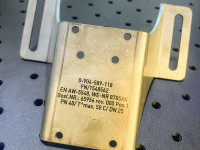UV lasers in medical technology
Precise markings without damaging the material
Medical technology places the highest demands on the marking of instruments, implants, and accessories. In addition to compliance with strict regulatory requirements, the focus is above all on patient safety. Markings must remain permanently legible, even after numerous sterilization and cleaning cycles, and must not compromise the integrity of sensitive materials. This is precisely where UV lasers in medical technology show their strengths.
Why UV lasers are ideal for medical technology
Compared to conventional methods such as inkjet printing or needle embossing, UV lasers are contactless, clean, and highly precise. The short wavelength of 355 nanometers allows materials to be marked using a process known as “cold ablation.” This generates hardly any heat, which means that even sensitive surfaces are not damaged or discolored.
This makes the UV laser the ideal choice for implants, plastic housings, or ceramic components. The markings are high-contrast, suitable for sterilization, and meet the requirements for traceability and MDR-compliant UDI marking.
Suitable materials for laser marking
The UV laser in medical technology is particularly useful when conventional fiber lasers reach their limits. Typical areas of application are:
- Plastics (PEEK, ABS, polycarbonate): Durable, high-contrast markings without damaging the material structure.
- Ceramics: Precise codes and logos that neither break nor flake off.
- Implants & instruments with special coatings: Permanent traceability without affecting biocompatibility.
The strength of the UV laser is particularly evident in high-performance plastics such as PEEK, which are often used in implants or surgical tools. The markings remain clearly legible even after aggressive cleaning or passivation.
Advantages of the UV laser for manufacturers and hospitals
- Permanent legibility: High-contrast codes and lettering that remain intact even after hundreds of sterilization cycles.
- No material damage: “Cold ablation” protects sensitive surfaces.
- UDI and MDR compliance: Ideal for traceability according to GS1 standards.
- High flexibility: Suitable for flat, curved, or coated surfaces.
- Cost-effectiveness: Reduced maintenance and no consumables.
Conclusion
The demands on medical technology are growing—both in terms of regulations and in terms of quality and patient safety. The UV laser for implants, plastics, and ceramics is a technology that combines maximum precision with maximum material protection. Manufacturers and hospitals benefit from durable, standard-compliant markings that withstand everyday use.
The JustMark UV Laser offers exactly the right solution for this – for sustainable processes, reliable traceability, and increased efficiency.


